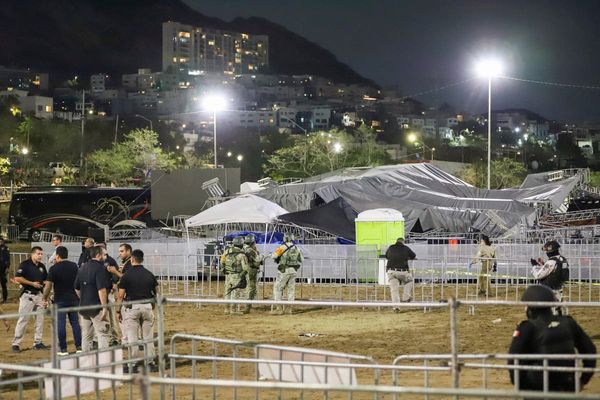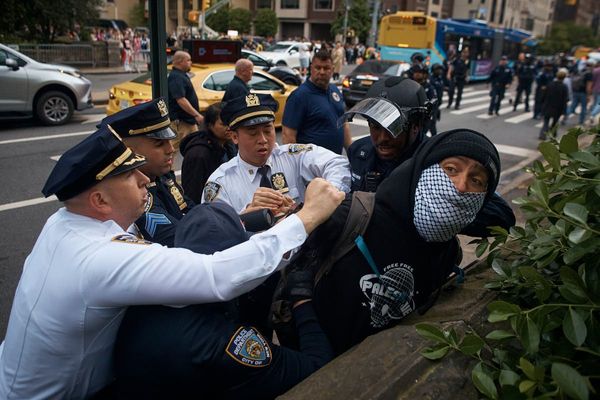
Chaos around the line of scrimmage, defensive backs smashing into each other and a wide-open receiver picking up easy yardage are all key objectives of NFL mesh routes.
The mesh point of an offensive play creates a discombobulating influence that can turn a great secondary on its ear. In a game where fractions of a second are the difference between touchdowns and turnovers, every ounce of separation gives way to pounds of production.
Finding those moments of hesitation get increasingly more difficult as you move up football’s food chain. By the time you get to the NFL, defensive backs have seen nearly every mesh variation you can think of. They’ve drilled it thousands of times between practice and game scenarios. They’ve bred out the instinct that creates the panic an average human feels seeing a 200-pound ball of muscle charging directly at them. They’ve worked out systems to mitigate and change of direction forced by a complex route tree.
But mesh still works. We see it every week, in short range situations and downfield. It’s a perfect concept occasionally run imperfectly to prove it still has the capacity to surprise. That doesn’t mean it’s infallible.
Case in point: the Detroit Lions’ second failed fourth-down attempt in the second half of the 2024 NFC championship game. A confluence of shallow crossers in the middle of the field is designed to create an easy throw for Jared Goff at the first down marker. Two different Detroit targets run from the left side of the formation to the right, bumping San Francisco 49ers’ defense off its man-to-man coverage on a pivotal down. One on-time pass, and the Lions’ march toward the end zone, in a three-point game, continues.
But the 49ers know something the Lions don’t. It’s not man coverage. And when Logan Ryan peels off his wideout to settle into the spot where Jameson Williams expected to have an easy catch, the play goes off the rails. Pressure means Goff has to improvise. His scrambling throw to Amon-Ra St. Brown falls short and another scoring drive is erased in San Francisco’s eventual 34-31 win.
Even if it didn’t work, the 2024 NFC title game gave us yet another example of a concept that’s existed since the forward pass and is still relied upon in the biggest moments of a team’s season. Let’s talk about that, as NFL wideouts and defenders share why this simple strategy works so well, even after millions of reps.
'It's all about deception' when defenses have seen mesh plays hundreds of times
A great mesh play walks a fine line between distraction and offensive pass interference. Fail to move a defender off his assignment, and the play suddenly depends on a pinpoint throw through a shrinking window.
The safety of a tried-and-true play means nothing if these targets can’t sell their routes, forcing defensive backs and linebackers off their preferred path and creating separation.
So how do wideouts and tight ends force cornerbacks who’ve squared up against these same crossing routes thousands of times to make a mistake? It turns out, there’s a few tricks of the trade. Most of them rely heavily on making someone think you’re about to run right the hell into them.
Darren Waller, tight end, Baltimore Ravens, Las Vegas Raiders and New York Giants: If [I’m] the guy that’s on top of the mesh concept, I’m running dead at that guy’s man until I’m about a couple yards away. Then I’m either stuttering, or I’m breaking left or right, whichever is easiest. You’ve gotta make sure you’re breaking and making that effort to get out of the way, unless you’re within one yard of the line of scrimmage. Then you can run into somebody.
But if you’re not, you’ve gotta stay with it and then veer off at the last second. As late as possible.
Stefon Diggs, wide receiver, Minnesota Vikings and Buffalo Bills: It’s all about moving at the right pace. I equate it to playing tag when you were a kid. You worked really, really hard to not get touched, changing your pace or trying to fool a guy.
For me, it’s more so just playing at a pace, stopping [a cornerback’s] feet, stutter stepping and just little stuff like that. You can learn it in the league, but a lot of guys forget to apply it. You study, study, study, then you forget to apply it on a test. Me? I just play at a place where I’m remembering, I’m applying and I’m getting open.
Cooper Kupp, wide receiver, Los Angeles Rams: Well, I can’t tell you exactly what it would be because there’s trade secrets. But I think there’s an element of: “I’m running my route, and all I’m trying to do is make someone stutter.” I don’t need to make someone stop. I just need to make someone stop their feet for a second.
DK Metcalf, wide receiver, Seattle Seahawks: It’s all about deception. So just wondering that I’m just making them think that you’re gonna run into them. They always teach us just to make the defender stutter their feet or just to make them bubble over the top, never underneath — just [to create] a longer route for them to try to recover.
Keyshawn Johnson, wide receiver, New York Jets, Tampa Bay Buccaneers, Dallas Cowboys and Carolina Panthers: You gotta know how to steer and step and not run into a person but come as close as possible to make them ride the hump — go around you.
It just depends on what was happening. If I was the primary target in that situation, I knew how to steer-step and set my [defensive back] up to a point where he’s either gonna run into my guy [the other crossing route or] run into the other defender or have to slow down. Then I’m still on the go. I just knew what to do as far as that goes. Sometimes it was [using my size as a deterrent], sometimes it was that.
***
Of course, running your cornerback into your teammate isn’t a foolproof solution. Crash too hard, and you’re an easy target for that 10-yard offensive pass interference flag. Here’s what it looks like when you take six points off the board via lack of mesh point subtlety.
gotta make the rub route a little less obvious, but solid effort nonetheless pic.twitter.com/nCsfqfDcPm
— Christian D'Andrea (@TrainIsland) October 22, 2023
How do defenses stop mesh?
The simplest method to stop a mesh play is to generate pressure using the extra leverage created by that man coverage. While that means leaving gaps in the middle of the field, it can also force bad throws and eliminate secondary reads deep.
It’s also a dangerous one; these routes take roughly a second to unfold, which leaves enough time to make a strike downfield even in the face of a potent blitz. Then, suddenly, there are fewer contingency plans for a stop after the catch — a chunk of your would-be tacklers are now behind the play in the backfield.
The more conservative method is to disguise coverage, leaving offenses to think they’re facing straight up man coverage while freeing a third defensive back or linebacker to identify the mesh point from the second level and jump onto that under route. With a solid four-man rush, you can do both.
Here’s how the Los Angeles Chargers did so against Patrick Mahomes and the Kansas City Chiefs in 2022. Pressure in the pocket and a solid read from linebacker Drue Tranquill blew up what looked like an easy first down at the line of scrimmage.
There’s danger inherent there as well. By locking onto these shallow routes, defenses leave room for single coverage on the vertical routes that develop behind them. For a safety like Hall of Famer Brian Dawkins, the primary assignment would always be taking care of the deep ball before jetting back toward the line of scrimmage to erase a shallow cross.
“We call it pick plays, they call it rub plays,” said Dawkins, who played for the Philadelphia Eagles and Denver Broncos in a legendary career. “It works against man to man.”
“[What you do] depends on the coverage I’m in. It depends on my responsibilities in those sections. You always take care of the vertical first. Then you come down late, because if I’m a thirds player, my responsibility is deep third, period. My secondary, then, is coming up to help make a tackle.
“If I read it correctly, I can be there to potentially make a pick. Once I take care of my deep responsibility, my understanding of the game and the concepts they run should put me in position to get closer to the action to go make a play.”
For someone closer to the line of scrimmage, there’s only one way to stop these mesh plays. According to former New England Patriot linebacker Tedy Bruschi, the key is keeping up in man coverage.
“Man to man coverage, “ he noted. “That’s the one defense against it. When you run those crossers, at the linebacker level especially, you’ve got some receivers that are capable enough mentally as they run those crossing routes. If you’re in a zone, they’ll hook up and stop, and that’s where relationships and quarterbacks like Patrick Mahomes and [tight end] Travis Kelce really come into play. He sees a zone defender to one side, and he knows exactly where to put it [where the defender can’t make a play], and Travis knows exactly where it’s gonna be.
“That makes it more complex on defenders. But when there’s more man-to-man, you’ve got guys running into each other motioning across. Then they put them in stacked concepts [where one wideout will line up behind another off the line of scrimmage pre-snap], and it’s just so hard to communicate on the run for a lot of defenses. There’s a lot going on when you’re talking about those concepts.”
When pressed on whether or not defenses can cheat and expect certain play calls in certain situations, Bruschi demurred.
“You never can guess what the route’s gonna be. These offenses are so good now, they can do anything out of their formations. Defenses counter that with rat concepts or lurk concepts — where you can give looks from two high [safeties] all the way down to one rat down the middle of the field, where there’s a linebacker, two linebackers, man-to-man on a back. And one guy takes the back based on where the back goes, and the other one rats the middle. That way, you can be there for those windows. That’s one way defenses counteract that.”
There’s also the art of selling. Crashing into a wideout downfield after you’re beat can draw laundry from a sympathetic back judge. Here’s how the Packers erased a big gain late against the Steelers in Week 10.
Could Green Bay cornerback Carrington Valentine have avoided Calvin Austin without fundamentally changing his path? It’s likely. But George Pickens had a step on him and, well, he saw an out and took advantage of it.
Why mesh concepts will 'continue to grow and develop'
The league’s top targets — the guys running mesh to perfection — don’t see a concept that’s been around for a century going anywhere. As long as it works, it’ll be a part of passing offenses. It hasn’t stopped working yet.
But while that simple concept — meet in the middle, forcing defenses to tie themselves up in knots — will persist, it will also grow.
Offensive coordinators will tweak the expectations around these rub routes, sliding them across the field and even using that mesh point as a decoy to lure defensive backs into a false sense of security (see Johnson’s Lions play call above). No matter what, we’ll have mesh in high school football, college football and the NFL. What exactly it looks like may change, however.
“You know, there’s so much speed in this league, you give guys the opportunity to just run away from people — you know, guys who are able to make plays for you,” said Kupp.
“It’s just going to be something that’s going to continue to grow and develop. In this league, things change all the time. Guys just are too innovative to just keep doing the same thing but mesh is going to be around to stay.”







